Our CEO, Sai Nidamarty, sat down with ProcureTech to discuss everything from #blockchain to celebrating successes. Check out the full article here.
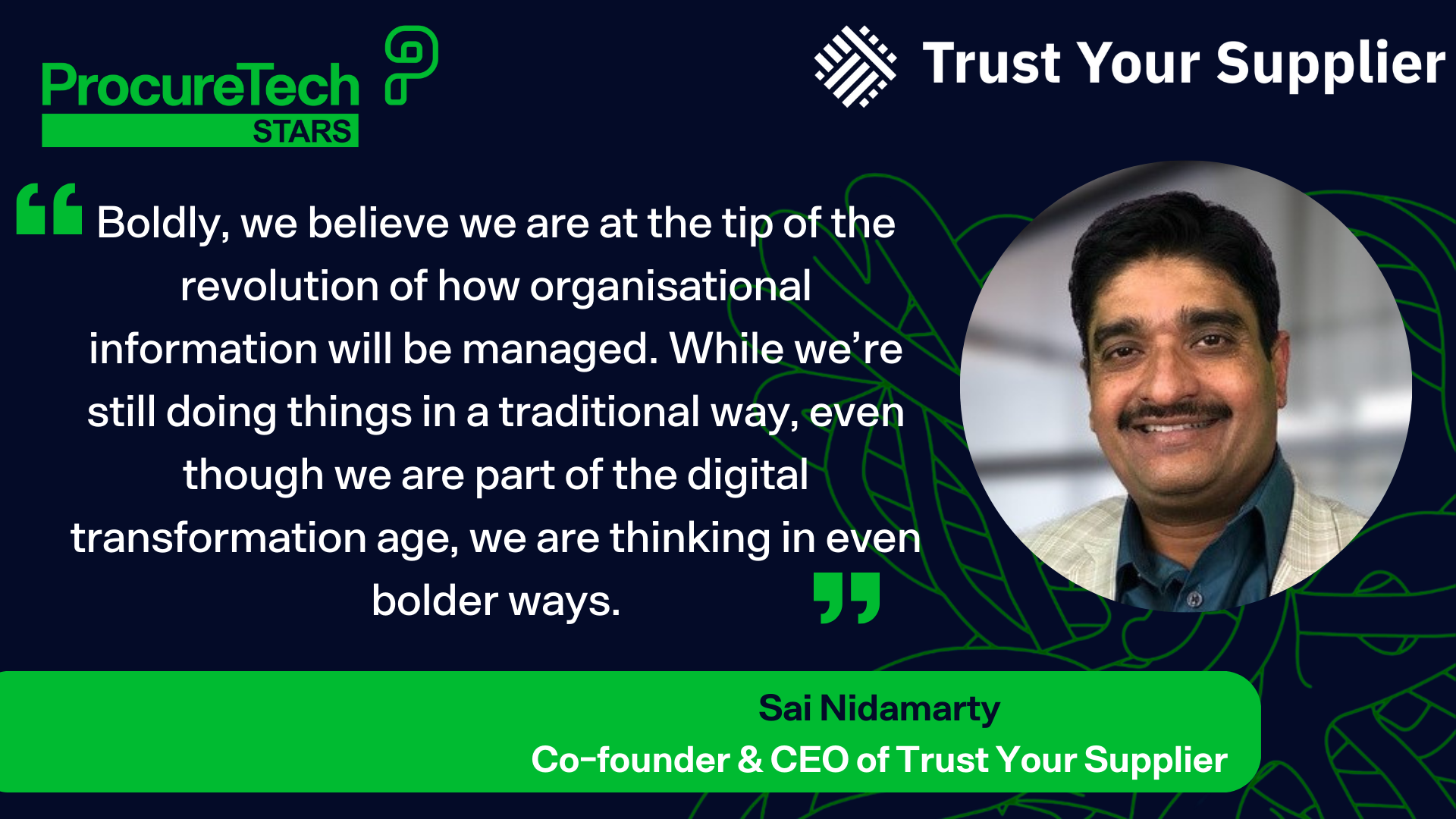

Our CEO, Sai Nidamarty, sat down with ProcureTech to discuss everything from #blockchain to celebrating successes. Check out the full article here.

Last week was one of the more interesting ones on the social media circuit, e.g., LinkedIn.
To start, a post referencing Dirk Spijkers raised an interesting debate regarding technology and partnerships. According to Spijkers, “at a high level, you must do more than provide great technology,” although great technology is still important. However, beyond the technology, you also “need to become a trusted “expert” partner who understands procurement organisations’ challenges across the enterprise and beyond.”
In my comment to that post, I said I would write an article about “breaking down the functional silos that limit the ability of internal and external stakeholders to work collectively toward a mutually beneficial outcome.” Today’s post is the fulfilment of that promise. I will also discuss the “critical role that a service provider will play in facilitating this collaboration to ensure seamless integration and user adoption.
The “Right” Skills
According to an August 2022 CIPS report, success in breaking down silos is directly linked to an organisation’s effectiveness at “facilitating collaboration to ensure seamless integration and user adoption” of new technologies. In short, and as intuitively user-friendly and effective digital tech – including AI is today, it still requires people with the right skills to work collaboratively toward a mutually beneficial result.
The report’s skills included “communication, internal stakeholder management, influencing, supplier relationship management, and negotiation.”
While the above observations sound entirely reasonable, a Deloitte Global Survey of CPOs indicates that a significant gap between recognition and realisation of skills still exists. The survey’s findings suggest that most CPOs are dissatisfied with the progress and results of their digital transformation strategies.
You may be wondering where I am going with this track. I will now come to the point. No matter how great the technology, digital success is built on the foundation of an organisation’s “digital readiness.” The core component of digital readiness means having the right talent and skills to communicate and collaborate with internal and external stakeholders. The collective and proactive application of these skills breaks down silos and paves the way for digital transformation success.
A Degree For Success
Several studies and corresponding articles indicate that in the five years leading up to the pandemic, many CPOs did not believe their existing teams possessed the necessary skills to deliver their strategic objectives. As I thought about these findings – which were somewhat surprising, a post by Iain Campbell-Mckenna caught my attention.
The post “Procurement’s Conscious Degree Bias” lamented the profession’s continuing practice of screening job candidates using a university or college degree as the proverbial “golden ticket” to get their foot in the door. How important is a candidate’s degree pedigree for choosing the next great hire? To what degree (excuse the pun) is having a diploma a predictor of success? Based on CPOs’ views of their team’s capabilities, prioritising education isn’t working.
There are a couple of great articles about “hiring for skills” by Chris Burt (University Business, July 2022) and Jonathan Finkelstein (Forbes May 2021) regarding the shift from diploma knowledge to “skilled experience.”
The message from a growing number of procurement industry experts and executives is becoming clear. Organisations need a team with the “right skills” to successfully break down the silos to achieve the level of digital readiness that leads to success.
Partner Skill and Experience Is Also Key
So, why am I talking about end-user skills as a solution provider?
Because when you are selecting a digital transformation partner, you have to look beyond the great technology to find the right skills, experience, and expertise to turn the digital promise into a digital success reality.
In a future post, I will talk about how you can assess a service provider’s technology and industry knowledge to optimise your success by leveraging advanced intelligent solutions.
Michelle Armstrong
TYS, Chief Relationship Officer
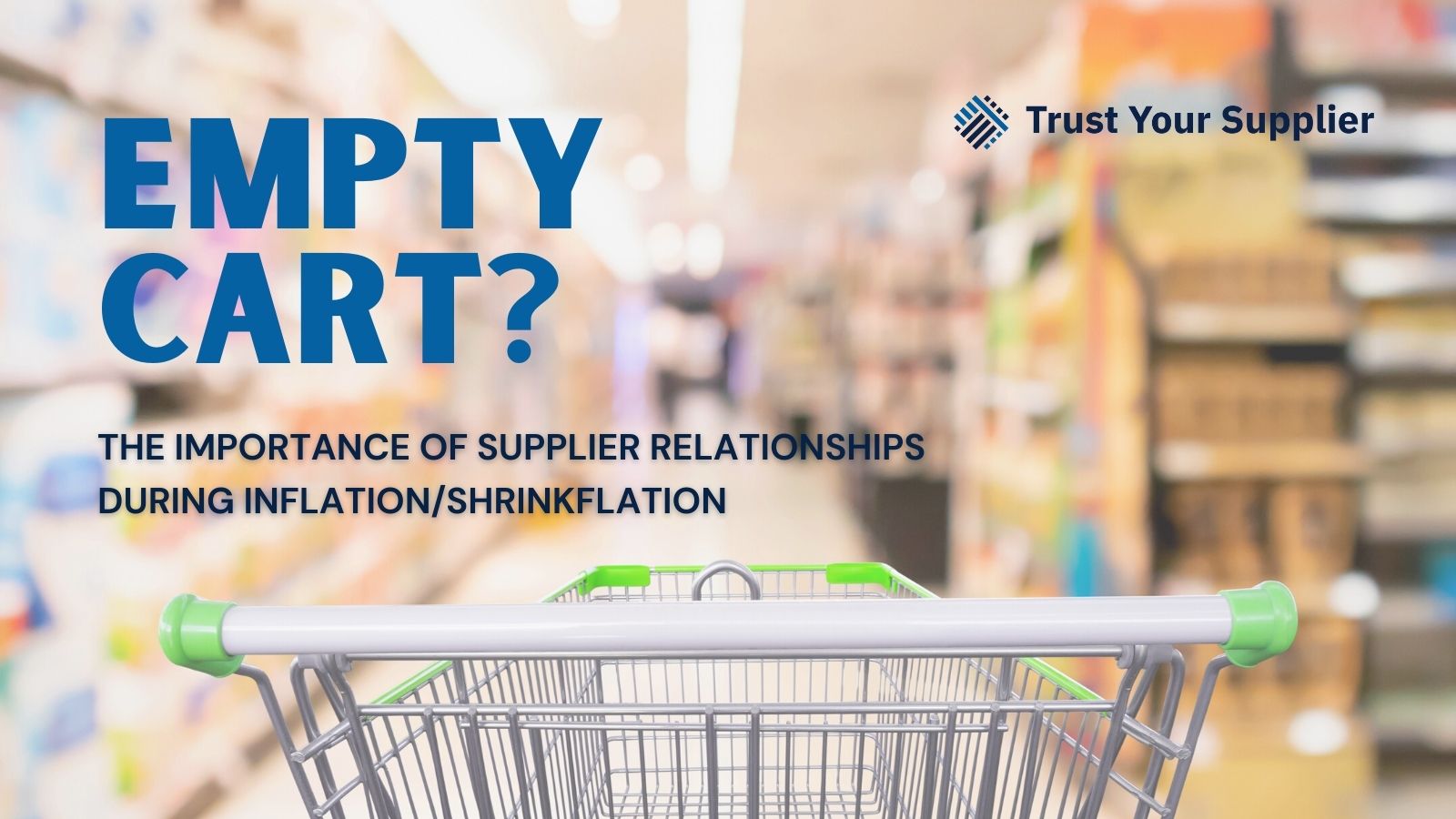
Inflation is a hot topic, and of course, outside of my personal wallet, my procurement background means that I usually view inflation/shrinkflation through a supply chain lens – more specifically, relationships and visibility.
For example, Dawn Tiura’s recent article on the introduction of a “grocery conduct code” was worthwhile reading for several reasons.
To start, citing the inflation battle between a large grocery retailer and Frito-Lay explains why price hikes are happening and why the manufacturer pulled some of my favorite snacks from the grocer’s shelves. By the way, some consumers have benefited from the situation because they discovered that alternative boutique brands were tastier and easier on the budget—more savings in their wallets.
That said, according to reports, by “providing clarity for business practices and establishing guiding principles” to “improve industry relationships” across supply chains, this new code will “ultimately benefit consumers as well.”
Of course, the code alone will not improve supply chain visibility resulting in a mutually positive buyer-supplier result. Companies will have to leverage real-time digital capabilities to assess market conditions and potential price hikes to allow them to collaborate on a solution with suppliers before it gets to the point of a loggerhead.
A State of Ready Visibility
The conduct code, or any legislative intervention, can be positive, especially when it “motivates” organizations to examine the state of their extended supply chains. I emphasize the words “extended supply chains.”
Not surprisingly, there is usually a greater familiarity and a much better understanding of the relationship with tier-one suppliers. These relationships can still be challenging, e.g., the retail grocer and Frito-Lay example from Dawn’s article.
What stood out to me from that example was the grocer’s ability to quickly tap into their second and possibly third-tier network to fill their empty shelves with quality product alternatives when their primary supplier stopped shipping their product.
It is clear that the retailer’s ability to engage their extended supply chain partners occurred long before the impasse with their leading supplier came to a head.
Here is the question: If you were to find yourself in the same position as the grocer, how quickly would you be able to identify and engage your next-tier suppliers? What is your state of ready visibility?
Extended Visibility by the Numbers
According to McKinsey, many organizations wouldn’t be able to respond to disruption by inflation or otherwise as quickly as they would need to or would want. Only 21 percent of companies have “visibility beyond their tier-one suppliers,” with only 2 percent having sufficient insight to engage their tier-three suppliers on short notice effectively.
Regardless of whether you are contending with inflation or geopolitical instability, or any other possible or probable supply chain challenge having complete line-of-site visibility throughout all tiers of your extended supply network is a state of readiness you should always want to achieve.
Nick Picone
Trust Your Supplier VP of Advisory Practice
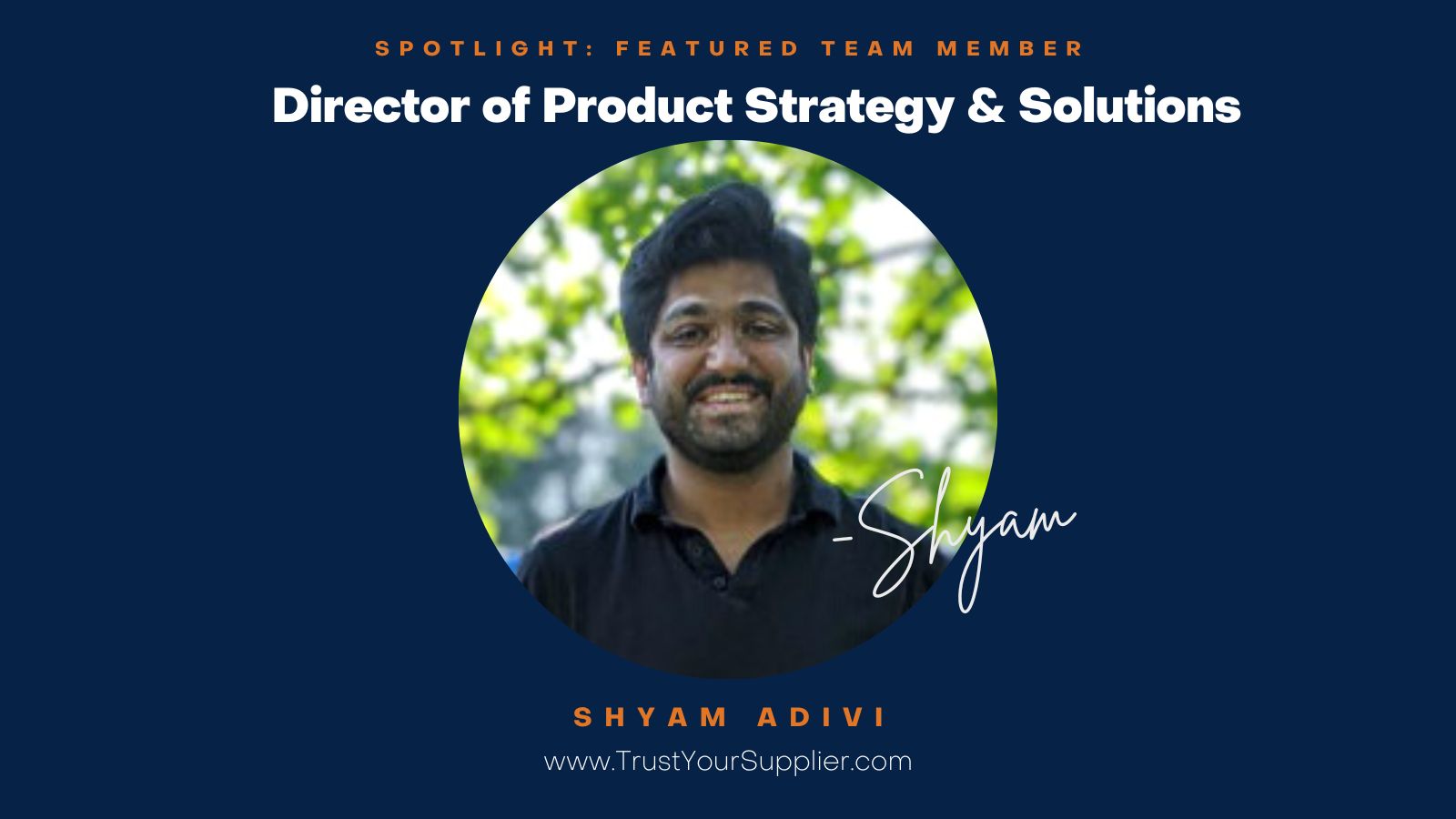
“Rowing harder doesn’t help if the boat is headed in the wrong direction.” -Kenichi Ohmae
Our Trust Your Supplier (TYS) platform doesn’t remain static. Data, market conditions, and new regulations are constantly in flux, which means the information our customers need invariably changes on a regular basis.
With a distinct ability to anticipate and scan the global environment for signals of change, Shyam Adivi serves as our Director of Product Strategy and Solutions. As a strategic leader, Shyam engages with our customers and partners to determine the direction of TYS’s roadmap.
Shyam’s strategy around features, timings, and offerings is often influenced by external occasions and regulations that affect procurement, supply chain, risk and compliance management, and digital transformation.
With these insights, Shyam aligns our customers’ needs with a streamlined development process. The results are an agile, innovative platform that provides continuous value and business results for our customers and partners.
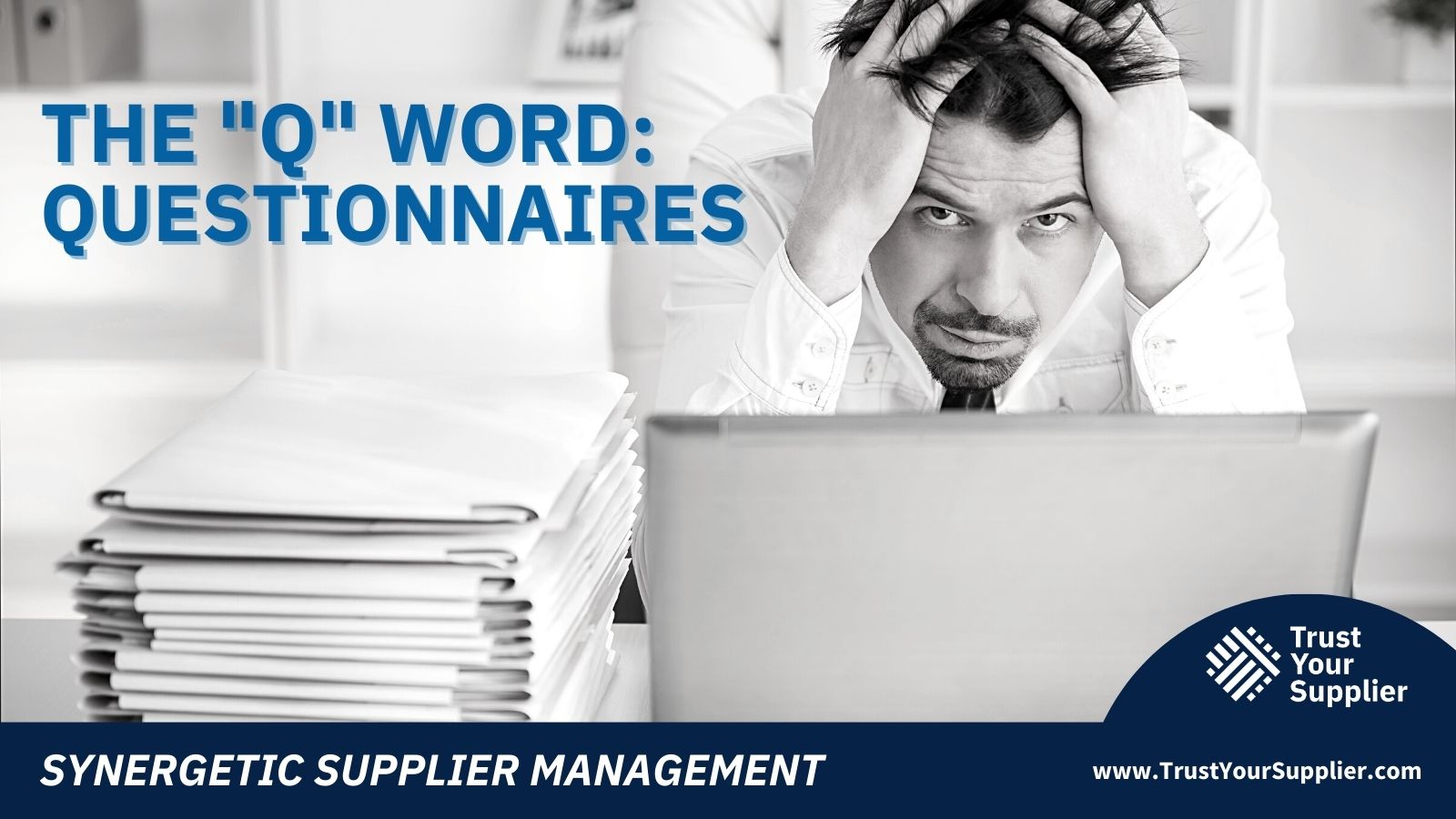
A favorite character in the James Bond series (other than James himself) is Q. Q always has these amazing hi-tech gadgets that save James from a certain demise at just the right time. Explosive alarm clocks, the Knife Shoe, exploding pens, a submarine Lotus Esprit, and of course the attacking sofa. He also has little patience for James and his laissez-faire attitude. Q is cool.
For your suppliers, what’s not cool is the “Q” word: Questionnaires.
Suppliers receive and return countless questionnaires containing dozens to hundreds of questions from each customer. Many of these questions are similar from customer to customer with slight variations and various formats. Just google “supplier questionnaires” and you’ll be overwhelmed with many template options and suggestions of what to include in your questionnaires.
So as a procurement organization, what should you include in your questionnaires? And how do you keep them up to date? Key global risks, evolving market conditions, geopolitical issues, and new compliance mandates require revisions to your questionnaires to collect crucial pieces of information from your suppliers. This is necessary to mitigate any risk to your organization.
Each time a company sends out a questionnaire or sends an updated questionnaire, the supplier must respond to each customer separately. The queue for having your specific questionnaire updated and returned can be quite lengthy, therefore creating a lag in the transfer of information. This lag leads to stale data and a lack of visibility to manage your company’s risk in current market conditions. 
So, what’s the solution? The “S” word: Standardization. Trust Your Supplier (TYS) has pulled together a conglomerate of major buying organizations to develop a set of questionnaires that are standardized. These questionnaires cover industry, location, and buyer-specific issues that allow each organization to assign the relevant questionnaires to their suppliers. And these questionnaires are kept updated to reflect new requirements and regulations.
Here’s an example of how it works:
A set of questionnaires can be assigned to a supplier by a customer. Once those questionnaires have been completed and published by the supplier, the procurement team can review the answers. But there’s more! Suppliers can then share the same completed questionnaires with other customers…with just a click of a button. So instead of sending the same 200 answers separately to each customer, the supplier now just needs to focus on any unique questions a customer may have. This dramatically reduces the supplier’s administrative burden as well as the onboarding time and keeps their information current and accurate.
Let’s suppose this supplier has added a new product and now they are working with conflict minerals. No problem. The supplier can update the Conflict Minerals questionnaire and once published, the system will automatically notify every connected customer. The supplier’s new motto is now: “Do Once, Share with Many.”
 These standardized questionnaires offer additional benefits to buyer teams. The TYS approvals workflow can be customized and automated with each questionnaire. Each answer can be “scored” based on your internal risk threshold. Any answer that does not align with your company’s preferred score will then be directed to the appropriate team role for further review and approval. This allows your team to focus on undesirable answers rather than spending time reviewing all answers.
These standardized questionnaires offer additional benefits to buyer teams. The TYS approvals workflow can be customized and automated with each questionnaire. Each answer can be “scored” based on your internal risk threshold. Any answer that does not align with your company’s preferred score will then be directed to the appropriate team role for further review and approval. This allows your team to focus on undesirable answers rather than spending time reviewing all answers.
Another TYS feature that softens the blow of the Q word is Questionnaire Groups. Depending on the supplier segmentation strategy, buyer organizations can use a targeted approach to send relevant questionnaires to a configured group of suppliers. These groups are customized by the buyer team and then assigned as a group to suppliers that fit into that category (i.e., location). This simplifies the questionnaire assignment process for the buyer team.
And the newest TYS feature is Predictive Questionnaires. Buyer teams can create a set of rules that will predict which questionnaires should be assigned to a particular supplier. This is tremendously valuable as new compliance regulations and laws come into play throughout the world, and provides the opportunity to reach more of your supplier base without further manual outreach. 
Ultimately, standardization and automation result in benefits for both supplier and buyer organizations. The reduction in the onboarding cycle time allows transactions to occur faster and there is reduced administrative effort on both sides. Buyer organizations can also then benefit from having full visibility into their supplier base for strategic decision-making and risk management.
Check out a real example of how quickly suppliers can complete their profiles and questionnaires on the TYS system.
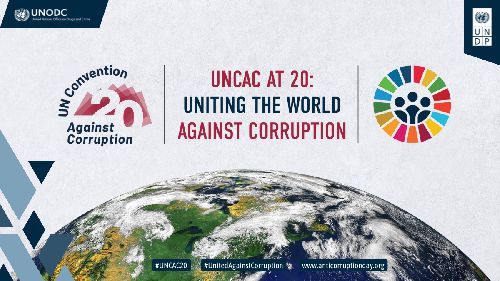
As part of our mission, Trust Your Supplier allows organizations to manage a broad spectrum of subject areas to inform compliance with global regulations. We would like to recognize the work being done by the United Nations in the areas of Anti-Corruption and Human Rights.
Over the next couple of days, the United Nations will launch yearlong campaigns to recognize the 75th anniversary of the Universal Declaration of Human Rights and the 20th anniversary of the United Nations Convention against Corruption. These issues impact areas such as financial, human potential, societal trust, and our future.
Read more about the Cost of Corruption and how ‘dirty money’ breaks everything – and what we can do to fight back here: https://undp.medium.com/the-cost-of-corruption-a827306696fb
Learn more about the Universal Declaration of Human Rights here: https://www.standup4humanrights.org/en/declaration.html
#UnitedAgainstCorruption #IACD2022 #UNCAC20 #STANDUP4HUMANRIGHTS
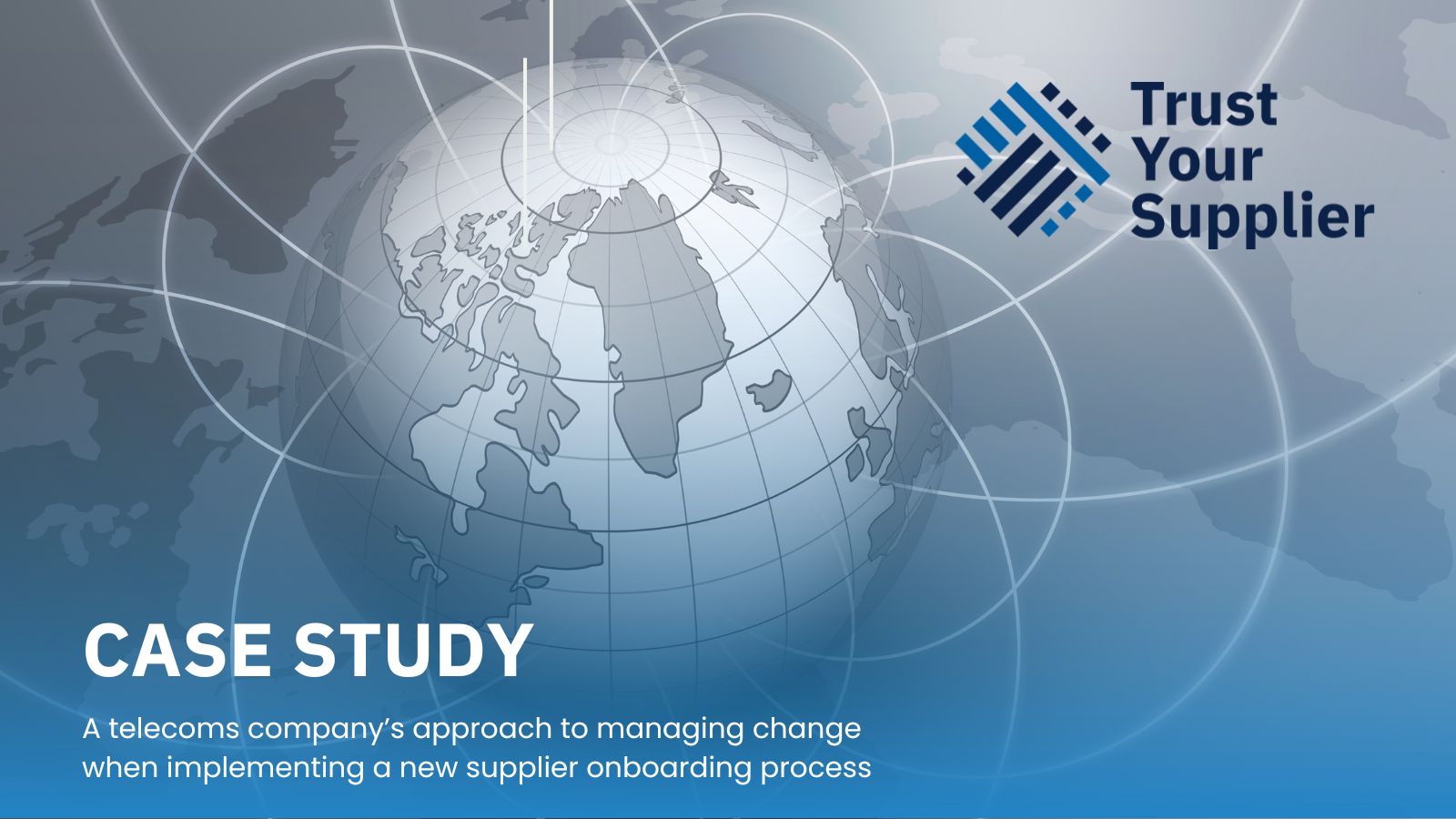
Now available is a Trust Your Supplier case study on a telecoms company’s approach to managing change when implementing a new supplier onboarding process. Read how the organization worked with suppliers and internal teams to roll out the Trust Your Supplier platform and the outcomes they are finding as a result.

The latest episode of the Sourcing Industry Landscape podcast focuses on how procurement and compliance teams of enterprise organizations are coping with geo-political, regulatory, and industry risks.
Host Dawn Tiura, SIG President & CEO discusses the Trust Your Supplier and Moody’s Analytics partnerships for illuminating supplier risk with Gary Storr, Trust Your Supplier’s GM, and Enrico Aresu, Moody’s Analytics Director of Compliance & Financial Crime Industry Practice Lead for DACH and BeNeLux.
Gary describes the evolution of TYS, and why we’ve evolved from an onboarding platform to a full ecosystem of risk & compliance data & tools. Partnering with risk Intelligence data providers, such as Moody’s Analytics, allows TYS users to stay on top of a wide array of compliance regulations, such as the new Human Rights legislation (SCDDA) from Germany.
Listen or watch at:
YouTube: https://youtu.be/LnkmRSeo6Gw
We are excited to welcome Nick Picone to the Trust Your Supplier team! Nick joins us as the Vice President of Advisory Practice and is responsible for worldwide sales execution and advisory practice strategy.
Bringing more than a decade of experience in the business software industry. For the last six years, Nick has served as an independent management consultant and spend management strategy advisor to Fortune 500 companies, hedge funds, private equity, and institutional investors. Before that, he was the Director of Strategic Sales at Coupa Software as the company scaled to an IPO. View his full bio here.
“My main priority is ensuring the success of our customers as we rapidly expand TYS’s footprint across the globe. Our supplier management platform defines disruptive innovation and will play a critical role in securing the future of the global supply chain. I look forward to working alongside our leadership team as we take TYS’s success to the next level.”
Nick earned a bachelor’s degree in business administration with an emphasis in Finance and Entrepreneurship from Baldwin-Wallace University.
We are delighted that Nick has joined our executive team to ensure the success of our customers, increase network adoption and establish new partnerships.
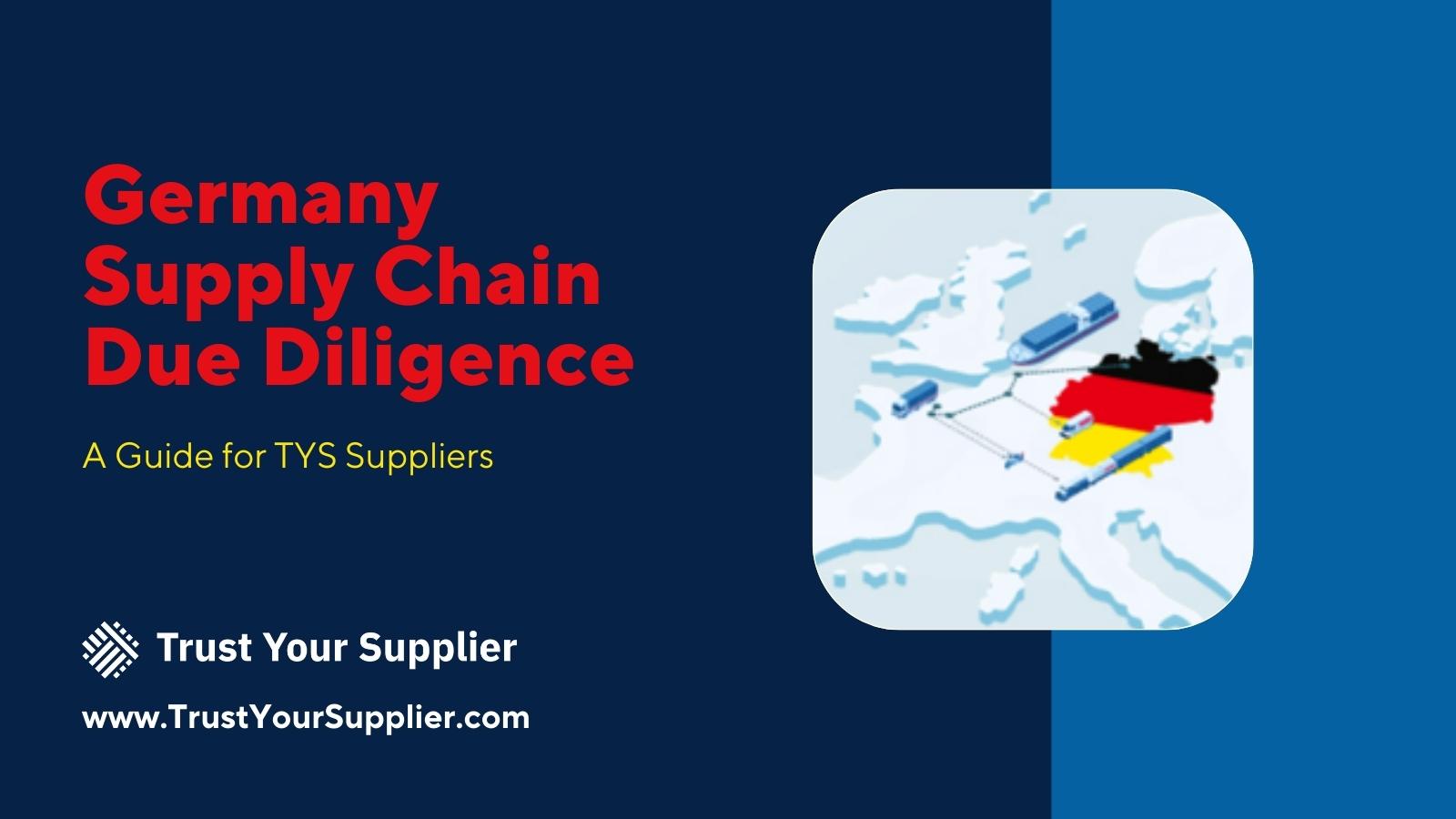
Lieferkettensorgfaltspflichtengesetz (Lieferkettengesetz or LkSG) comes into effect in Germany from 2023. Known in English as the German Supply Chain Due Diligence Act (SCDDA), the law mandates companies with offices in Germany to conduct due diligence on their supply chains to protect human rights and the environment.
For our Trust Your Supplier buyer organizations, we’ve created a quick guide to help your suppliers understand and respond to customer requests in such a way as to make sure that their organization benefits from the process, too.
This guide can be downloaded here to share with your suppliers.